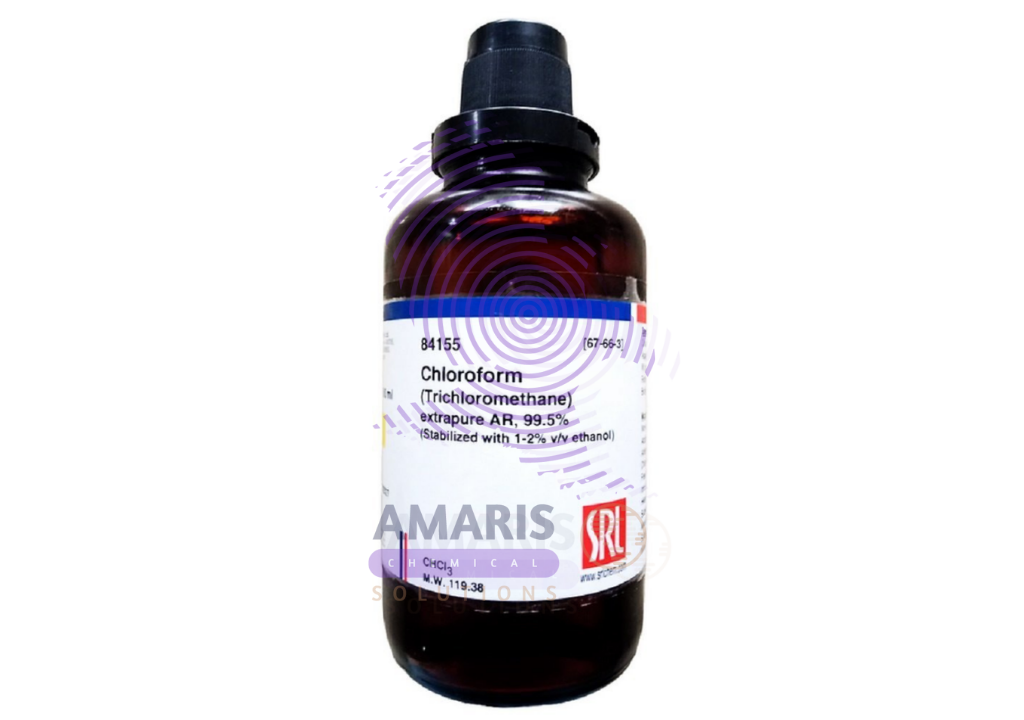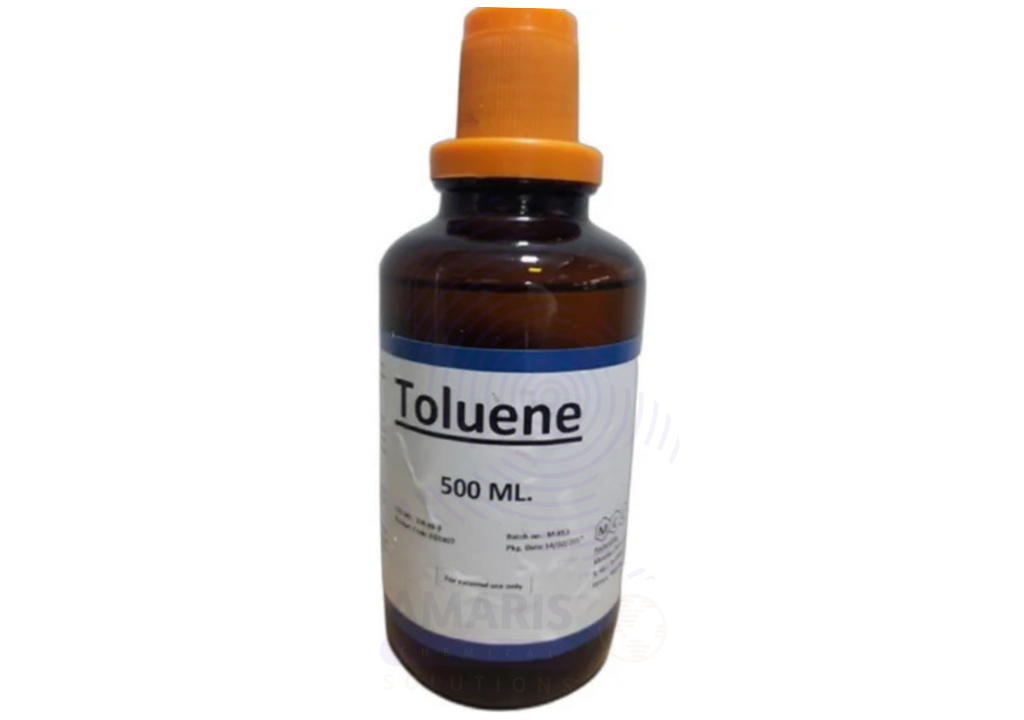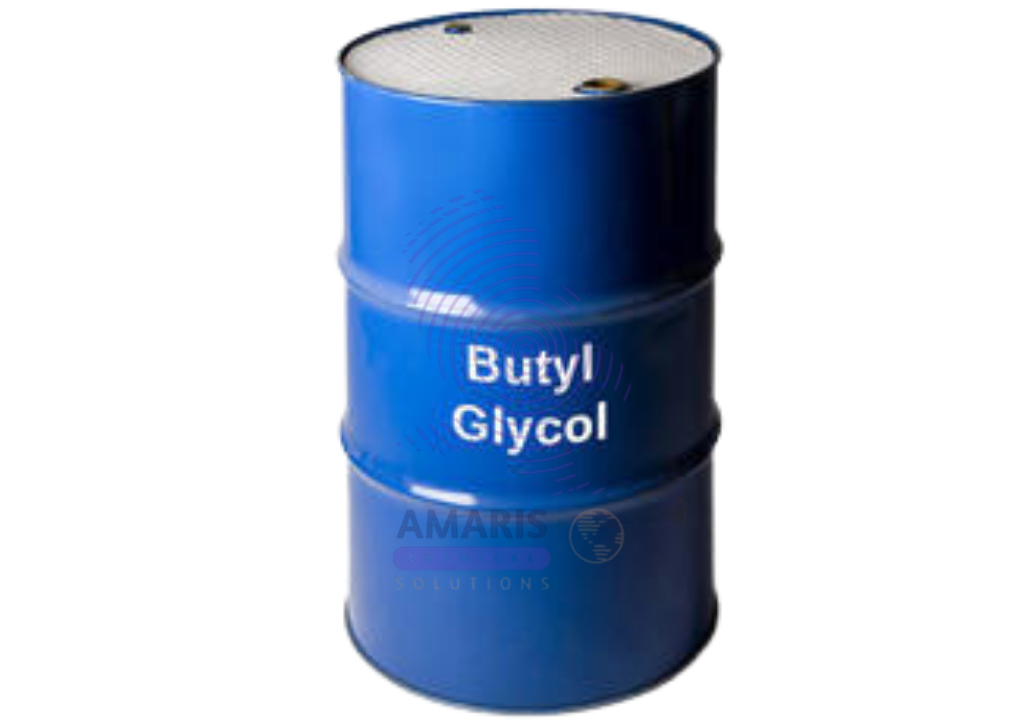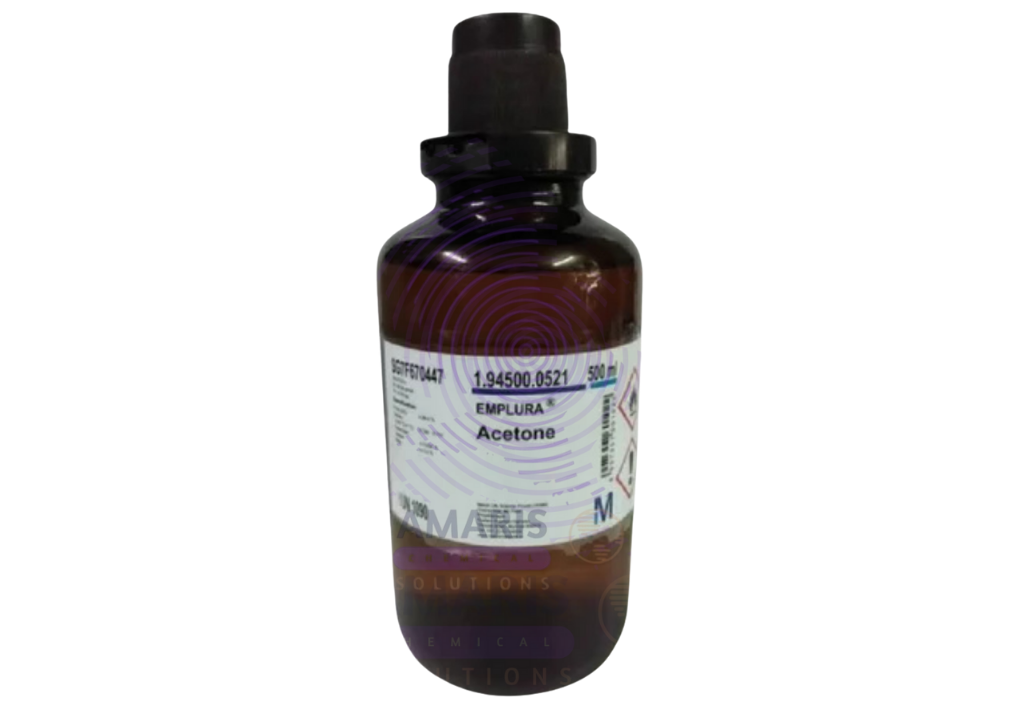Acetone: A Versatile Solvent At The Heart Of Industry And Science
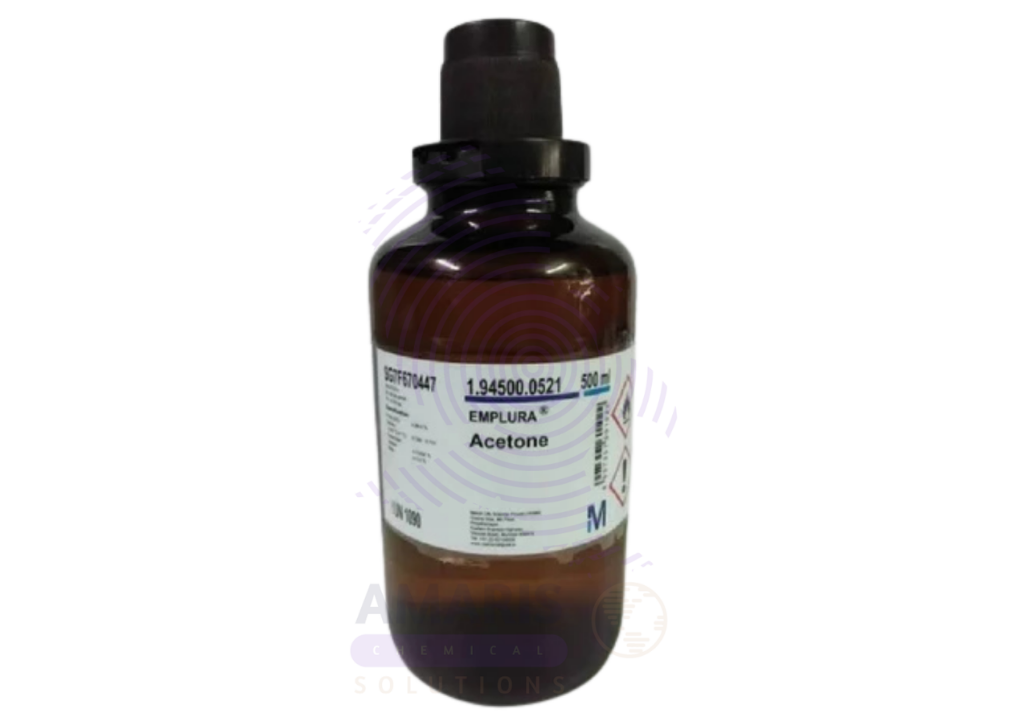
In the realm of laboratory chemicals and industrial solvents, Acetone is one of the most familiar and essential compounds. Also known by its IUPAC name propanone, acetone is a colorless, volatile, flammable liquid that is widely used as a solvent, cleaning agent, and chemical intermediate. Despite its simple molecular structure, its range of applications spans pharmaceuticals, cosmetics, plastics, textiles, laboratories, and beyond.
What is Acetone?
Chemical Formula: C₃H₆O
Molecular Weight: 58.08 g/mol
Boiling Point: 56°C (132.8°F)
Solubility: Fully miscible with water, alcohol, ether, and most organic solvents
Appearance: Clear, colorless liquid with a characteristic sweet odor
Acetone is the simplest ketone and is highly valued for its powerful solvency, low boiling point, rapid evaporation, and compatibility with water and a wide array of organic substances.
Industrial and Laboratory Applications of Acetone
1. Laboratory Solvent
In laboratories, acetone is a universal solvent. It is frequently used to:
- Clean glassware
- Prepare surfaces for reactions
- Dissolve organic compounds
- Remove excess water from organic extractions
- Serve as a reaction medium in organic synthesis
Its quick evaporation and low residue make it ideal for preparing surfaces for analysis or coating.
2. Pharmaceutical Industry
Acetone plays an important role in the formulation of:
- Active pharmaceutical ingredients (APIs)
- Coatings and excipients
- Drug synthesis reactions
It also acts as a solvent for various topical products and medicinal creams due to its ability to dissolve a wide range of substances and evaporate quickly.
3. Cosmetics and Personal Care
Acetone is found in:
- Nail polish removers
- Skin cleansers
- Degreasers
Its fast action and compatibility with oils and waxes make it a common ingredient in makeup removal and cleaning products.
4. Plastics and Polymers
Acetone is used to:
- Clean and dissolve plastic resins
- Thin polyester resins in fiberglass applications
- Act as a solvent in plastic welding
Its ability to break down polymer chains makes it useful for shaping and modifying plastics and composite materials.
5. Paints and Coatings
Acetone is a standard solvent in:
- Paint thinners
- Lacquers
- Varnish removers
- Industrial coatings
It helps dissolve and apply paint formulations smoothly and evaporates quickly for fast drying.
6. Textile and Leather Industry
Used in dyeing and degreasing processes, acetone helps in:
- Removing oils from natural fibers
- Pre-treating fabrics
- Enhancing dye penetration
Safety and Handling Considerations
Although acetone is relatively low in acute toxicity, it is highly flammable and should be handled with care:
Personal Protective Equipment (PPE):
- Safety goggles
- Nitrile gloves
- Lab coat or chemical-resistant apron
- Adequate ventilation or fume hood use
Storage Guidelines:
- Store in a cool, dry, well-ventilated area
- Keep containers tightly closed and away from sources of ignition
- Use flame-proof cabinets for large volumes
First Aid Measures:
- Inhalation: Move to fresh air. Seek medical help if irritation persists.
- Skin Contact: Wash with water. Remove contaminated clothing.
- Eye Contact: Rinse with plenty of water for several minutes.
- Ingestion: Do not induce vomiting. Seek immediate medical attention.
Environmental and Health Impact
Acetone is biodegradable, and while its environmental impact is lower than many chlorinated solvents, it can still cause air pollution and irritate aquatic life when released in large quantities. Inhalation of vapors may cause dizziness, headaches, and respiratory irritation. Long-term exposure should be avoided in poorly ventilated areas.
Conclusion
Acetone is much more than just a nail polish remover or a lab cleaner—it is a cornerstone of modern chemistry and industrial processing. From its role in manufacturing pharmaceuticals and plastics to its ubiquity in laboratories and beauty products, acetone continues to be an indispensable solvent across disciplines.
Its powerful solvency, quick evaporation, and wide compatibility make it a trusted compound in scientific, industrial, and commercial contexts. However, its flammable nature and potential health risks demand careful handling, making education and safety awareness critical for its use.


 Preservatives(food)
Preservatives(food) Flavor Enhancers
Flavor Enhancers Acidulants
Acidulants Sweeteners
Sweeteners Antioxidants
Antioxidants Colorants(food)
Colorants(food) Nutraceutical Ingredients (food)
Nutraceutical Ingredients (food) Nutrient Supplements
Nutrient Supplements Emulsifiers
Emulsifiers
 Collectors
Collectors Dust Suppressants
Dust Suppressants Explosives and Blasting Agents
Explosives and Blasting Agents Flocculants and Coagulants
Flocculants and Coagulants Frothers
Frothers Leaching Agents
Leaching Agents pH Modifiers
pH Modifiers Precious Metal Extraction Agents
Precious Metal Extraction Agents
 Antioxidants(plastic)
Antioxidants(plastic) Colorants (Pigments, Dyes)
Colorants (Pigments, Dyes) Fillers and Reinforcements
Fillers and Reinforcements Flame Retardants
Flame Retardants Monomers
Monomers Plasticizers
Plasticizers Polymerization Initiators
Polymerization Initiators Stabilizers (UV, Heat)
Stabilizers (UV, Heat)
 Antifoaming Agents
Antifoaming Agents Chelating Agents
Chelating Agents Coagulants and Flocculants
Coagulants and Flocculants Corrosion Inhibitors
Corrosion Inhibitors Disinfectants and Biocides
Disinfectants and Biocides Oxidizing Agents
Oxidizing Agents pH Adjusters
pH Adjusters Scale Inhibitors( water)
Scale Inhibitors( water)
 Antioxidants(cosmetic)
Antioxidants(cosmetic) Emollients
Emollients Fragrances and Essential Oils
Fragrances and Essential Oils Humectants
Humectants Preservatives
Preservatives Surfactants(cosmetic)
Surfactants(cosmetic) Thickeners
Thickeners UV Filters
UV Filters
 Fertilizers
Fertilizers Soil Conditioners
Soil Conditioners Plant Growth Regulators
Plant Growth Regulators Animal Feed Additives
Animal Feed Additives Biostimulants
Biostimulants Pesticides (Herbicides, Insecticides, Fungicides)
Pesticides (Herbicides, Insecticides, Fungicides)
 Active Pharmaceutical Ingredients (APIs)
Active Pharmaceutical Ingredients (APIs) Excipients
Excipients Solvents(pharmaceutical)
Solvents(pharmaceutical) Antibiotics
Antibiotics Antiseptics and Disinfectants
Antiseptics and Disinfectants Vaccine Adjuvants
Vaccine Adjuvants Nutraceutical Ingredients (pharmaceutical)
Nutraceutical Ingredients (pharmaceutical) Analgesics & Antipyretics
Analgesics & Antipyretics
 Analytical Reagents
Analytical Reagents Solvents(lab)
Solvents(lab) Chromatography Chemicals
Chromatography Chemicals Spectroscopy Reagents
Spectroscopy Reagents microbiology-and-cell-culture-reagents
microbiology-and-cell-culture-reagents Molecular Biology Reagents
Molecular Biology Reagents Biochemical Reagents
Biochemical Reagents Inorganic and Organic Standards
Inorganic and Organic Standards Laboratory Safety Chemicals
Laboratory Safety Chemicals Specialty Laboratory Chemicals(Special Laboratory Equipment)
Specialty Laboratory Chemicals(Special Laboratory Equipment)
 Demulsifiers
Demulsifiers Hydraulic Fracturing Fluids
Hydraulic Fracturing Fluids Scale Inhibitors(oil)
Scale Inhibitors(oil) Surfactants(oil)
Surfactants(oil) Drilling Fluids
Drilling Fluids
 Dyes and Pigments
Dyes and Pigments Bleaching Agents
Bleaching Agents Softening Agents
Softening Agents Finishing Agents
Finishing Agents Antistatic Agents
Antistatic Agents
 Admixtures
Admixtures Waterproofing Agents
Waterproofing Agents Sealants and Adhesives
Sealants and Adhesives Curing Compounds
Curing Compounds Concrete Repair Chemicals
Concrete Repair Chemicals Anti-Corrosion Coatings
Anti-Corrosion Coatings
 Surfactants(cleaning)
Surfactants(cleaning) Builders
Builders Enzymes
Enzymes Solvents (Cleaning)
Solvents (Cleaning) Fragrances
Fragrances
 Electronic Chemicals
Electronic Chemicals Catalysts
Catalysts Lubricants
Lubricants Photographic Chemicals
Photographic Chemicals Refrigerants
Refrigerants Automotive chemicals
Automotive chemicals Pyrotechnic Chemicals
Pyrotechnic Chemicals
 Biodegradable Surfactants
Biodegradable Surfactants Bio-based Solvents
Bio-based Solvents Renewable Polymers
Renewable Polymers Carbon Capture Chemicals
Carbon Capture Chemicals Wastewater Treatment Chemicals
Wastewater Treatment Chemicals
 Pigments
Pigments Solvents(paint)
Solvents(paint) Specialty Coatings
Specialty Coatings Binders/Resins
Binders/Resins Additives
Additives Driers
Driers Anti-Corrosion Agents
Anti-Corrosion Agents Functional Coatings
Functional Coatings Application-Specific Coatings
Application-Specific Coatings
 Fresh Herbs
Fresh Herbs Ground Spices
Ground Spices Whole Spices
Whole Spices Spice Blends
Spice Blends Dried Herbs
Dried Herbs
 Leavening Agents
Leavening Agents Dough Conditioners
Dough Conditioners Flour Treatments
Flour Treatments Fat Replacers
Fat Replacers Decoratives
Decoratives Preservatives(baking)
Preservatives(baking)
 Plasticizers & Softeners
Plasticizers & Softeners Reinforcing Agents
Reinforcing Agents Adhesion Promoters
Adhesion Promoters Vulcanizing Agents
Vulcanizing Agents Antidegradants
Antidegradants Blowing Agents
Blowing Agents Fillers & Extenders
Fillers & Extenders Accelerators & Retarders
Accelerators & Retarders
